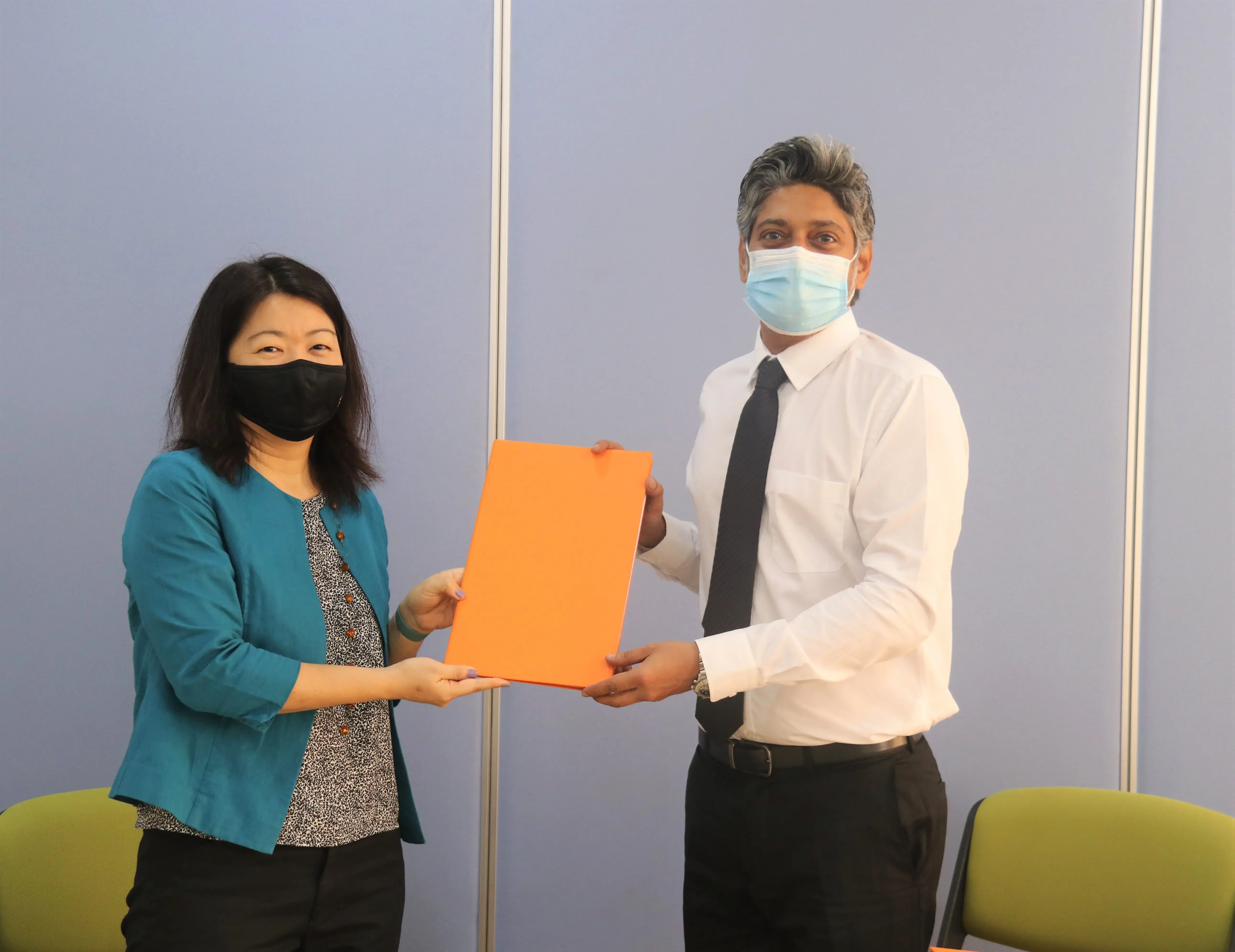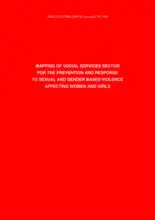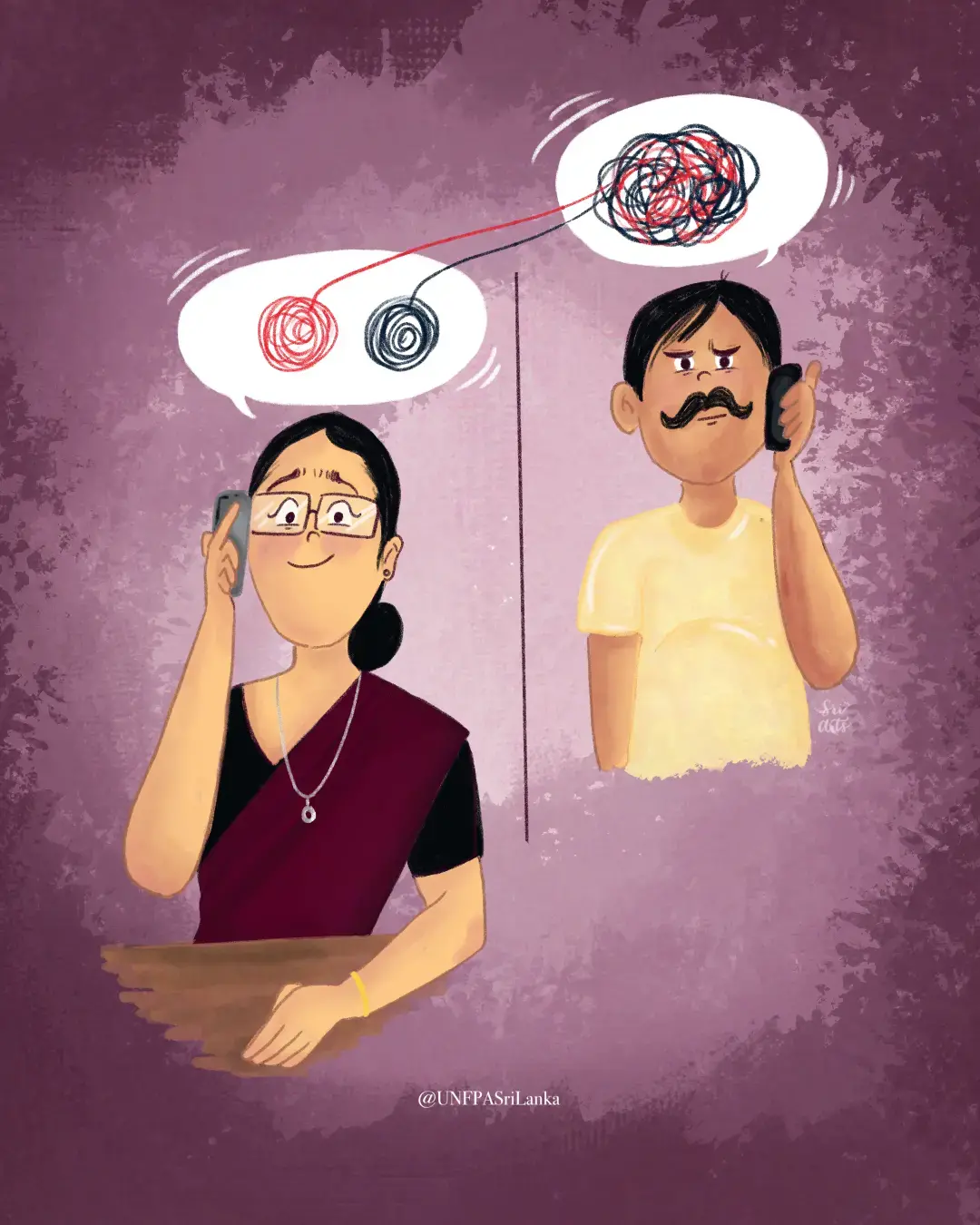By Alain Sibenaler, Representative of the United Nations Population Fund Sri Lanka

We live in turbulent times. More than a billion people alive today have seen their lives upended by various crises. War, political instability, epidemics and disasters have left a long trail of turmoil and destruction.
Sri Lanka has had more than its fair share of crises. These include the armed conflict that ended in 2009. In December 2004 the crushing waves of the Tsunami struck our shores, killing over 30,000 people in its destructive path, as well as recurring floods and landslides that have taken an estimated average of 30 lives a year from 2000 to 2012.
Less than a month ago, Sri Lanka was struck by a heavy rainfall, causing severe flooding in mainly the northern part of the country. Approximately 80,000 people were affecting by the flash flooding, while thousands were displaced.
The United Nations Population Fund’s (UNFPA) highlights in this year’s State of the World 2015 report, released on Thursday (03 December); that the likelihood of being displaced by a disaster today is 60 per cent higher than it was four year’s ago. This year, in 2015 more than 100 million people were in need of humanitarian assistance, up from 88 million in 2014 and 78 million in 2013. About a quarter of them are women and adolescent girls of child bearing age – between 15 and 49.
When a crisis does strike, women and girls tend to face a ‘double whammy’ as they are disproportionately disadvantaged. Without the usual protection of family and community, women and adolescent girls frequently become victims of sexual violence, unwanted pregnancies and sexually transmitted diseases. In 2014, UNFPA provided contraceptives and family planning supplies targeting nearly 21 million women, men and adolescents in humanitarian settings.
A decade ago, Sri Lanka was coping with the aftermath of its biggest natural disaster, the tsunami. Many female tsunami survivors were subjected to various forms of sexual violence during the recovery as well as in the post-tsunami infrastructure development period specific needs of women were limited or neglected.
Since 2005, Sri Lanka’s disaster risk reduction policies have addressed gender mainstreaming in disaster management. But more can be done to ensure crisis-affected women’s sexual and reproductive health needs are met.
Shelter from the Storm
What can countries do to ensure women and girls in crisis situations are protected, and their human rights respected? Some policy choices and best practices are presented in the State of the World’s Population Report 2015, being released this week.
The theme of this year’s report, produced by UNFPA, the United Nations Population Fund with expert inputs, is ‘Shelter from the Storm: A transformative agenda for women and girls in a crisis prone world’.
The report highlights the fact that of the more people are displaced by crisis than at any time since the cataclysm of the Second World War; an estimated 59.5 million. Natural disasters now affect 200 million people a year. The risks and vulnerability of women and girls in these situations are disproportionately high.
“The health and rights of women and adolescents should not be treated like an afterthought in humanitarian response,” says UNFPA Executive Director, Dr. Babatunde Osotimehin. “For the pregnant woman who is about to deliver, or the adolescent girl who survived sexual violence, life-saving services are as vital as water, food and shelter.”
Even well intentioned humanitarian interventions that fail to account for the different ways which disasters and conflicts affect different groups and genders can end up perpetuating inequalities. For example, general health care provided to affected persons in a crisis often does not cover services related to pregnancy, childbirth or contraception. This leaves already disadvantaged women and girls in even more precarious situations.
The metaphorical the glass is half-full: shows remarkable progress has been made in the past decade in targeting humanitarian services to women and girls. Still, large gaps remain in both action and in funding.
Sendai to SDGs
The report draws on two major conceptual frameworks adopted by the world’s governments this year.
The first is the Sendai Framework for Disaster Risk Reduction, adopted at the Third UN World Conference on Disaster Risk Reduction held in Sendai, Japan, in March 2015. It places strong emphasis on disaster risk management with a view to achieving substantial reductions in disaster losses over the next 15 years.
The second is the post-2015 Development Agenda, which 193 Member States of the United Nations adopted at the Sustainable Development Summit held in New York in September. The agenda features 17 new sustainable development goals (SDGs) also known as the “Global Goals”, aims by 2030, to eradicate extreme poverty, promote prosperity and people's well-being, while protecting the environment.
The government of Sri Lanka participated in both inter-governmental processes and has committed to their outcomes. President Maithripala Sirisena attended the New York Summit which was at heads of state level, where he again confirmed Sri Lanka’s commitment to the SDGs and the post 2015 Agenda.
In translating these global commitments into action, we need ensure that ‘no one is left behind’, reiterated the UN Secretary General Ban Ki-moon during the last stages of negotiating the SDGs.
That includes women and girls in crisis, the particular focus of the State of the World’s Population Report 2015.
The report surveys the SDGs’ provisions for increasing resilience worldwide. For example, SDG 11 on sustainable cities and communities sets the target of “holistic disaster risk management at all levels” by 2020. Under SDG 13, on climate action, it urges nations to “strengthening resilience and adaptive capacity to climate-related hazards and natural disasters in all countries”.
Meanwhile, SDG 3 on good health and well-being, calls for ensuring “universal access to sexual and reproductive health-care services, including for family planning, information and education” by 2030, which directly relates to UNFPAs mandate.
SDG 5, on gender equality, covers “eliminating all forms of violence against all women and girls in the public and private spheres, including tracking and sexual and other types of exploitation”. It also calls for “universal access to sexual and reproductive health and reproductive rights”. The governments have already committed to this at key international conferences held in recent years.
Unfinished business
The SDGs succeed the Millennium Development Goals, or MDGs, that have guided the development sector since its adoption in 2000. For the past 15 years, the MDGs have provided a framework for Sri Lanka’s national development programmes. The last assessment, released in March, showed the country has done well on many fronts.
A key accomplishment is that fewer Lankan women die needlessly of complications arising from pregnancy and childbirth. The maternal mortality rate, which stood at 92 deaths per 100,000 live births in 1990, came down to 32 by 2014. Doctors or skilled health workers are now present during almost all births.
But these national level statistics mask sub-national disparities. Women living in former conflict areas, as well as some in the estate sector, still do not have the same human development indicators as in the rest of the country. Women and girls impacted by emergencies suddenly become more vulnerable.
The bottom line is that disasters and other crises affect men and women differently. That needs to be factored into all policies and programmes of government and humanitarian relief agencies.
In the coming years, as Sri Lanka forges ahead with its resilient development within the SDG and Sendai frameworks, more can be done to ensure that ‘no one is left behind’ – or neglected.




